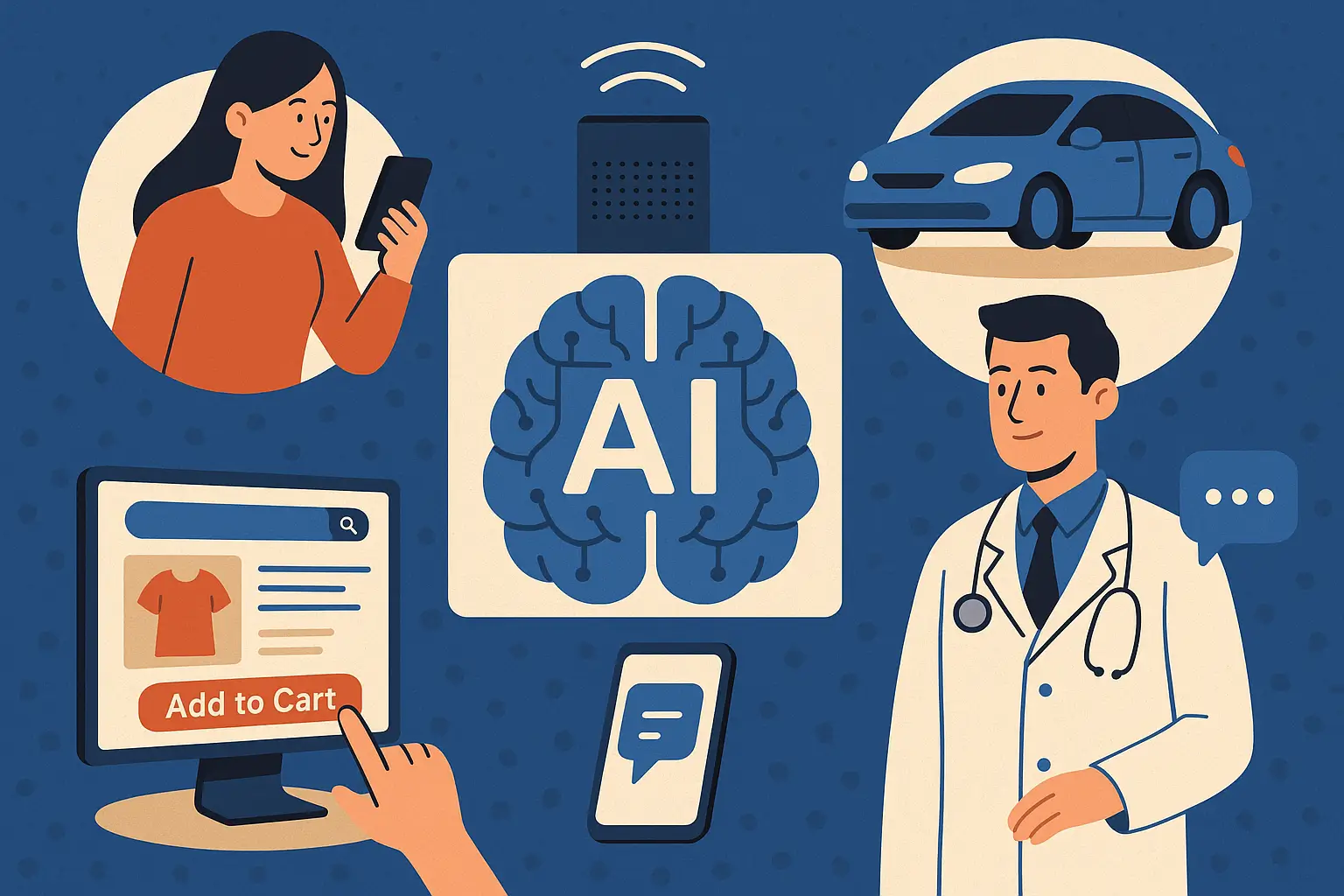Artificial Intelligence (AI) is no longer just a concept from science fiction—it’s part of our everyday routines. From your morning smartphone alarm to your evening streaming session, AI powers many of the tools, services, and platforms you rely on. But while AI often works silently in the background, its impact is massive and growing.
This article explores how AI is transforming daily life in practical, accessible, and often invisible ways.
AI at Home
Our homes are becoming smarter thanks to AI technologies integrated into common household devices.
Smart Assistants
Devices like Amazon Alexa, Google Assistant, and Apple’s Siri use natural language processing to understand voice commands and carry out tasks like:
- Setting reminders and alarms
- Controlling smart home devices
- Providing weather, traffic, and news updates
- Playing music and answering questions
These assistants “learn” your preferences over time, becoming more efficient and personalized.
Smart Appliances
AI is embedded in refrigerators, ovens, and vacuum cleaners, enabling features like:
- Automatic grocery list creation
- Optimized cooking modes
- Room mapping for cleaning robots like Roomba
Home Security
AI-powered surveillance cameras can distinguish between humans, pets, and objects—reducing false alarms and improving safety. Facial recognition and motion detection add extra layers of intelligent monitoring.
AI in Communication
Every time you write a message, comment, or email, AI is often there to help.
- Autocorrect and predictive text are powered by AI.
- Spam filters in email systems use machine learning to detect and block unwanted messages.
- Real-time translation in platforms like Google Translate bridges language barriers instantly.
- AI chatbots provide customer support on websites and apps, resolving queries without human agents.
AI in Shopping
Whether you’re buying groceries or looking for new clothes, AI plays a crucial role in the e-commerce experience.
Personalized Recommendations
Retail giants like Amazon and Netflix use recommendation engines based on AI to analyze your behavior and suggest products or shows you’re likely to enjoy.
Visual Search
Apps like Pinterest and Google Lens allow users to search for items using images instead of text, identifying objects, outfits, or furniture in a photo.
Inventory and Logistics
Behind the scenes, AI helps businesses:
- Predict demand for products
- Automate warehouse operations
- Optimize delivery routes
AI in Transportation
AI is changing how we get from one place to another, making transportation safer and more efficient.
Navigation and Maps
Apps like Google Maps and Waze use AI to analyze traffic patterns in real time, suggesting the fastest routes and alerting you about accidents or delays.
Ride-Sharing
Uber and Lyft rely on AI for:
- Route optimization
- Fare calculation
- Matching drivers with riders based on proximity and behavior
Autonomous Vehicles
Self-driving cars from companies like Tesla, Waymo, and Cruise use AI to:
- Detect and classify objects
- Make split-second decisions
- Navigate traffic without human intervention
Though still in development, AI-powered vehicles are already being tested and used in limited commercial applications.
AI in Entertainment
The content we consume is increasingly curated, created, and even generated by AI.
Streaming Platforms
Netflix, Spotify, and YouTube use AI to analyze what you watch or listen to, suggesting new content that fits your tastes.
Gaming
AI powers non-player characters (NPCs) in video games, making them more realistic and responsive. It’s also used for dynamic difficulty adjustments and storytelling.
Creative AI
Tools like ChatGPT and DALL·E can generate:
- Poems, stories, and articles
- Images and illustrations
- Music compositions and beats
Artists and creators now collaborate with AI to explore new forms of expression.
AI in Health and Wellness
AI enhances healthcare accessibility and quality, both in clinics and at home.
Virtual Health Assistants
AI chatbots like Ada and Babylon Health assess symptoms and offer preliminary medical advice.
Wearable Devices
Smartwatches and fitness bands use AI to:
- Monitor heart rate and activity
- Detect irregularities like arrhythmia
- Provide personalized workout and sleep recommendations
Medical Imaging and Diagnostics
AI tools assist doctors by analyzing X-rays, MRIs, and CT scans faster and more accurately than traditional methods.
Mental Health
Apps like Woebot offer AI-guided therapy sessions, providing support for anxiety, depression, and stress management.
AI in Education
AI is helping to make learning more personalized and accessible.
Adaptive Learning Platforms
Tools like Khan Academy and Duolingo adjust the difficulty of content based on a learner’s progress and behavior.
Essay Scoring and Feedback
AI can review essays, highlight grammatical errors, and offer suggestions for improvement.
Language Learning
Speech recognition and natural language processing help learners practice pronunciation and conversation skills in real time.
AI and Everyday Services
AI is woven into services we use every day, often without us realizing it.
- Banking: Fraud detection algorithms monitor transactions for suspicious behavior.
- Weather Forecasting: AI analyzes massive amounts of data to predict weather patterns with greater accuracy.
- Job Applications: AI filters resumes and matches candidates with roles through recruitment platforms.
Final Thoughts: Living with AI
Artificial Intelligence is already an essential part of modern life. It helps us communicate, shop, stay healthy, travel, learn, and be entertained. As AI continues to evolve, its presence will only grow—hopefully in ways that make life simpler, safer, and more connected.
Understanding these everyday applications empowers us to use AI more effectively and responsibly in our own lives.
